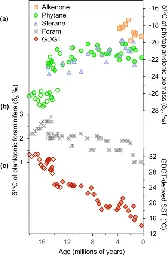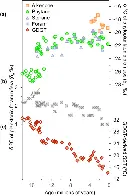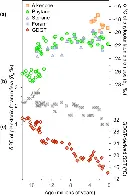New study in Nature with 7.2C equilibrium climate sensitivity
New study in Nature with 7.2C equilibrium climate sensitivity
Molecular fossils from marine phytoplankton reveal a substantial decline in CO2 values over the past 15 million years and may support higher climate sensitivity than previously reported.

Using our new range of pCO2 values, we calculate average Earth system sensitivity and equilibrium climate sensitivity, resulting in 13.9 °C and 7.2 °C per doubling of pCO2, respectively. These values are significantly higher than IPCC global warming estimations, consistent or higher than some recent state-of-the-art climate models, and consistent with other proxy-based estimates."
It should be noted that our ECS is not the same as the ECS used by the IPCC, given that it represents specific climate sensitivity S[CO2,LI] (i.e., ESS corrected for potential slow land ice feedback) and does not consider changes in other greenhouse gases (e.g., methane), paleogeography, nor solar luminosity; we are currently unable to conduct these additional considerations65. The impact of additional methane and water would bring down ECS, which likely explains why paleo ECS is generally higher than modern models.
So it's not a perfect study and it's only one study, but hinting at the higher climate sensitivity. If it really was 7.2C, it would be a quick wild ride out.


